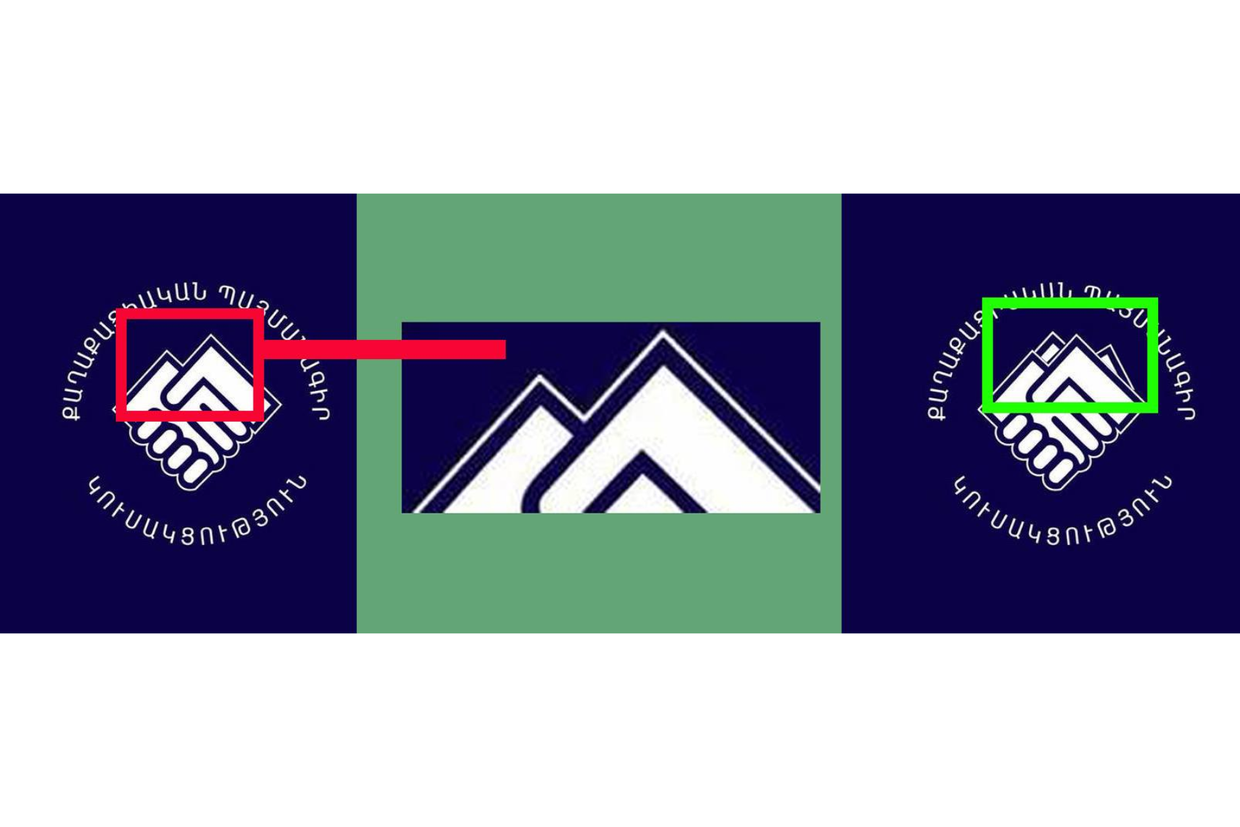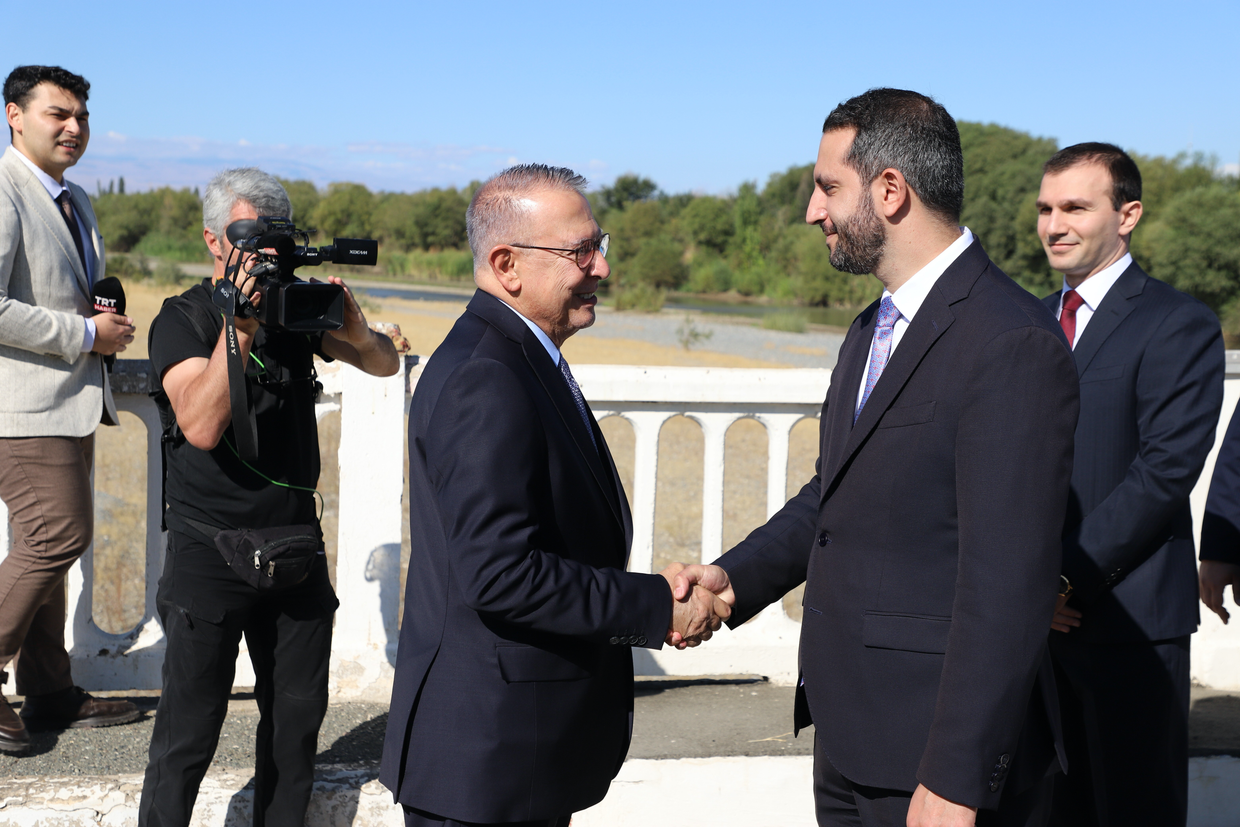
Starting 1 November, the stamp at the border crossing of Armenia will no longer feature an image of Mount Ararat. The controversial decision to remove such a cherished symbol sparked criticism and sarcasm, with much of the mockery centered around the name of Foreign Minister Ararat Mirzoyan, suggesting that it would be replaced with Aragats, Armenia’s highest peak.
The stamp design will undergo changes based on a decision adopted by the Armenian government on 11 September, which will only carry information about the border crossing.
The news went viral days after the decision was adopted, considering that it was passed as a non-reportable issue and left out of the public’s attention.
The government decision, which also includes the visuals of the future stamp, would exclusively carry information on border crossing, the word Armenia in both Armenian and English, and will be smaller in size.
‘The justifications for the decision are very simple: the stamps have been brought into line with the modern requirements for border crossings, as well as the ideology of the Real Armenia’, wrote Arsen Torosyan, a prominent member of the ruling Civil Contract party and newly appointed Minister of Labour and Social Affairs, in response to the criticism.
Real Armenia is a concept that was introduced by Prime Minister Nikol Pashinyan in April 2024, insisting that Armenians must accept modern Armenia within its current borders.

Though located within Turkey, Mount Ararat is highly important in Armenian history and culture, and the government’s move to remove it from the stamp has sparked criticism. It is considered a sacred mountain, was mentioned in the Bible, and is one of the most important national symbols of Armenia.
Former Foreign Minister Vartan Oskanian commented on the issue on Monday, highlighting the importance of Mount Ararat for Armenians, insisting that having the mountain located in the territory of Turkey in the Armenian coat of arms does not pose any territorial claim. Furthermore, he suggested that ‘the world is full of similar examples’.
‘The irony is that symbols like Ararat could, in a wiser political climate, be bridges rather than barriers. Turkey could acknowledge that Armenians have a special relationship with Ararat without seeing it as a threat. Indeed, recognising the depth of that bond could be an act of reconciliation, not division’, Oskanian wrote.
He added that the issue was not only about stamps or coat of arms — ‘It is about whether Armenia will stand firm in preserving its own identity or allow that identity to be edited by others’.
Mount Ararat is also depicted in the Armenian coat of arms, which in January 2024, Armenian Parliamentary speaker Alen Simonyan proposed changing alongside the national anthem. Although he did not explicitly mention the removal of Mount Ararat, critics argued that this was the underlying intent of the proposed changes.
Not Ararat, but ‘Aragats Mirzoyan’
Aside from direct criticism of the decision, the removal of the image of Mount Ararat from the stamp also sparked a wave of sarcastic reactions.
Much of the mockery centered on Armenia’s Foreign Minister Ararat Mirzoyan, who is named after the mountain, as well as the ruling Civil Contract party’s emblem, which was originally designed with reference to Mount Ararat. The reference was later removed from the party’s charter in 2022.
A parody page on Facebook, called Ministry of Clarification of the Republic of Armenia, suggested that the Armenian government adopted another decision, according to which, starting from 1 January 2026, ‘at the request of the Turkish side, Ararat Mirozyan’s name will be officially changed to “Mr. Mirzoyan” ’.
‘This step is intended to give additional weight to the decisions made by Armenian diplomacy’, the post concluded.
While Facebook another user joked — ‘Ararat Mirzoyan is now on Instagram as Aragats Mirzoyan’.
Mount Aragats is the highest peak in Armenia. Although it is cherished and was suggested by Pashinyan as a symbolic alternative to Mount Ararat, it does not carry the same cultural and historical significance as Ararat.
Separately, the parody page the Ministry of Clarification of the Republic of Armenia, published a ‘statement’ on behalf of the imaginary Real Republic of Armenia.
‘We are hopeful that the Turkish side has not noticed the hidden contour of Mount Ararat in the emblem of the Civil Contract Party. As a temporary solution, we propose to switch to the image of Aragats [...] until regional developments are clarified’, the statement read.

The decision to remove Mount Ararat from the stamp made headlines as Serdar Kılıç, Turkey’s Special Envoy for normalisation with Armenia, arrived in Armenia via the land border, which remains closed, to hold talks for the first time in Yerevan.
Following the visit, Turkish Foreign Minister Hakan Fidan has stated that ‘the final signing of the [Armenia–Azerbaijan peace treaty] is expected in the first half of 2026’. He further noted that Turkey would start ‘taking steps’ to normalise relations with Armenia once the agreement is signed.

This article was translated into Russian and republished by our partner SOVA.











